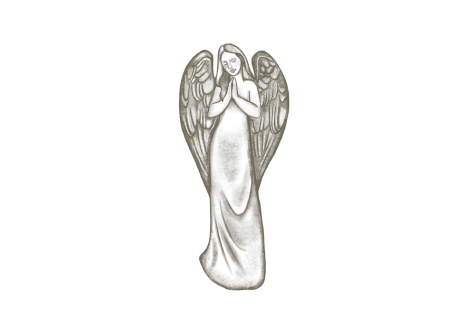Mortuary cosmetologists create closure by preserving a loved one’s image
July 12, 2022

Editor’s note: This article is from the Communication Department’s award-winning Echo magazine.
Dealing with a loved one’s death can be a difficult experience, but mortuary cosmetologists preserve the final image of the body to give closure during the healing process.
With their mastery of human anatomy and death care, mortuary cosmetologists create the final image of the deceased by replicating their likeness and capturing their essence. Mortuary cosmetology, formerly known as “desairology,” restores a dead person’s skin tone, makeup and nails to mimic a natural version of how they looked during life.
During death care, restorative artists use their passion for sculpting and makeup artistry to ease families’ anxiety about an open-casket funeral service.
Fawn Monique, a global cosmetologist and expert skin therapist who assists funeral homes with mortuary makeup, has been a makeup artist for almost 23 years. “It’s [mortuary cosmetology] very much a ritual, and I think that there’s a beautiful side of it. I wish more people did it, especially in the makeup world.”
Monique owns two makeup studios in Pennsylvania that offer energy therapy such as reiki, as well as makeup education, bridal makeup and cosmetology services. She receives several phone calls from funeral homes because of her cosmetology expertise, usually for hard cases where there’s been trauma and severe discoloration. “My goal [for bodies] is to look like they’re sleeping,” says Monique. “I have pictures of them prior to death and get their coloration.”
Even though embalming companies create makeup for post-mortem use, makeup artists can choose to purchase their own makeup. Monique keeps cruelty-free, organic cosmetics in her makeup bag, such as RMS Beauty and Giella Custom Blend Cosmetics.
The biggest challenge Monique faces on the job is working with chemical changes the body goes through postmortem. Skin becomes discolored, skin and hair breakdown occurs and the body exhibits bloating. She uses cosmetics to balance the deceased’s skin tone, so the body doesn’t look painted.
“The skin is different from live skin because it doesn’t absorb products as you would when the skin’s functioning with blood flow,” Monique says.
Typically, Monique applies makeup based on a photo provided by the deceased’s loved ones. Sometimes she’s requested to apply makeup directly from the deceased’s makeup bag.
“My whole thing is it’s an honor to be a part of somebody’s last makeup ritual,” she says. “I do makeup for people during the most important times of their life, so being part of that last makeup ritual is really an honor to me.”

Amber Carvaly, licensed funeral director, mortician and founder of funeral home Undertaking LA, says the deceaseds’ bodies are treated with respect throughout their time at the funeral home. “I’m just wildly passionate about ensuring that people know that trusting your loved one is an option,” Carvaly says in terms of exploring funeral and burial options.
When preparing a body, embalmers have to be careful to not make drastic changes to the appearance that could upset the family. Loved ones have the option to dress and do the body’s makeup themselves.
Carvaly has personal experience with this situation, with her now-deceased friend Maria, who always wore a specific shade of red lipstick by MAC Cosmetics. The embalmer picked a different shade of red with the wrong undertones, so Carvaly went to the funeral home, wiped off the original red and put on Maria’s signature red lip.
“I can tell you that’s one of the most beautiful things I’ve ever experienced in my entire life,” Carvaly says. “I feel like if there’s an afterlife and I ever got to see Maria again, she would thank me for ensuring her lipstick was on her.”
Carvaly says embalmers have a more interesting job, and it takes attention to detail to apply someone’s makeup for the last time. “The body comes in and you fill out an assessment that looks like a coroner’s report and examine their blood spots, broken bones or their contusions and what’s going on with their body,” Carvaly says.
When it comes to the typical day-to-day tasks of a funeral director or embalmer, Carvaly says, it’s important to ensure every step in the process is documented, from applying makeup to writing a death certificate.
“We live in a very red tape society, and emotions have no red tape. They’re just like yellow caution tape all over the place. And I know how the red tape and the bureaucracy works, but people don’t know that when their mom dies,” says Carvaly. “They don’t know what’s happening, and their life is falling apart, and they have three days to figure it out and have to go back to work and be a normal person.”
Though death can be a heartbreaking process for those involved, cosmetologists work to preserve life and love through the celebration of the deceased’s final ritual.
You can read the entire 2022 issue of Echo, as well as previous issues, on our website.







